Finding out what the Saxons ate
- 22nd January 2021
Feeding Anglo-Saxon England (‘FeedSax’) is a highly important project looking at food in the Anglo-Saxon period, and one of our excavations has helped them with their project.
FeedSax is an ERC-funded (European Research Council) research project led by Professor Helena Hamerow (Professor of Early Medieval Archaeology, University of Oxford). The project is researching the impact that Anglo-Saxons had on agriculture, and agricultural practice, in this country as they introduced new farming techniques, whilst crops that were previously a minor part of cultivation regimes also became dominant for the first time. Although some believe this to have been an agricultural revolution, this is still much debated.
The science behind the project
To prove how the Anglo-Saxons’ techniques and crops worked, the project team are, in their words,
| “applying a suite of science-based techniques such as stable isotope analysis and functional weed ecology to preserved seeds, animal bones and pollen, to generate the first direct evidence for how crops were grown in this transformative period of history.” |
| Feeding Anglo-Saxon England – © Copyright 2020 |
In order to achieve this, the project required reliable samples of excavated material (“environmental samples”) that included bone, pollen and seed remains in order to analyse them. As part of the project, Dr Mark McKerracher (an archaeobotanist and Postdoctoral Researcher, University of Oxford) has written a paper based on our team’s work.
(An archaeobotanist is someone that analyses and interprets the relevance of plant remains found on an archaeological site).
How do we do get reliable samples?
We were able to provide the high-quality samples and a detailed report about them that the project needed.
As part of any archaeological dig, we take environmental samples around features of interest (e.g. blackened pottery, charcoal or burnt material in a pit, etc.). These samples are generally around 4 x 10 litre tubs for each feature. The samples are analysed by an environmental archaeologists, or an archaeobotanist, after the samples have been put through a flotation process.
The light floated material, called flots are then examined using a microscope, and the heavier residues sorted by eye. Sometimes environmental remains are put through a dating process known as “Carbon-14 dating” where the strength of radioactivity from the carbon in the samples enables specialists to date the material.
What did our team find?
In 2017, our archaeology team were invited to do a dig in Holmer, on the north side of Hereford.
| Amongst other features, the team excavated a ditch assumed to date from around the early 13th century. You can see the darkened streak which was sampled, and which contained bone, cereal grain and pulses.
|
|
|
The ovens to the east of site were drawn by hand as well as photographed and sampled. Photographs are fine for getting an impression, but drawnings help bring a feature to life. |
|
| You can see the drying-oven design, where flat stones made up the base and hot air was drawn over the grains. The ‘environmental samples’ were extracted not only in the soil around the oven, but also between the stones so we could capture what made up the soil such as cereal grain, chaff, pulses and crop weeds etc. |
|
|
Another similar looking oven shows the practicality of the design.
|
Following on from our work, radiocarbon dating by the FeedSax team shows that the charred cereal remains at the bottom of the ditch (thought to possibly be of 13th century date) were analysed and found to be from the same period as the drying oven – in our case, grains were dated between 1022AD – 1154AD in a paper from Mark McKerracher which helped us more accurately date the ditch and the agricultural technology that was the drying-oven.
However, FeedSax were also able to radiocarbon date charred grain from a ditch originally thought to be 11th to 12th century in date. This produced a date of 891 – 981AD, which means it could be contemporary with an 8th to 9th century pit on the site, or is more likely to represent a new 10th century phase, hitherto undetected.
What we produced was a 62-page detailed report that provided the FeedSax project team with precisely the detail they required.
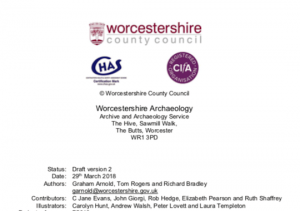 |
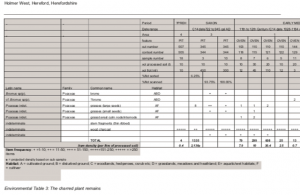 |
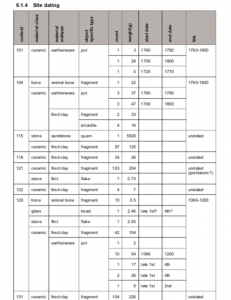 |
Summary
A dig in Holmer, north Herefordshire and the detailed report that the team produced as a result, fed into (pardon the pun) a significant project to be released in 2021. The results will provide an invaluable insight into how Anglo-Saxon farming techniques and produce led to a revolution in agriculture. The production methods used then differ enormously from those in use today and we are happy to have been able to add to the information about the ‘farming revolution’.
Our archaeologists dig some great sites and it is gratifying to know that our fieldwork feeds into further research and can be seen by a wider audience and archaeological community. Together with the expertise of our own archaeobotanists and palynologists, we add so much to the archaeological record.
The Farming revolution
Today’s wheat is highly modified by modern breeding. It’s very short (barely knee high) compared to the long-straw wheat (around shoulder height), and as a result it doesn’t compete well with crop weeds. So, we spray these short wheat crops with herbicides to kill off the weeds. In Saxon fields you would have seen red poppies, pink corn cockle and other weed seeds. Now these weeds are almost extinct, and soils pretty much inert. We’ve replaced people and animal poo in the fields with herbicides, pesticides and chemical fertilisers. Also, the make-up of the gluten and starches in the grain has changed. Many now think that changes in gluten and starch content of the grains is an important factor in gluten/wheat intolerance today.
There is a lot that we could say about how relevant archaeology is to big issues being discussed today so watch out for more on that published later.
The FeedSax project is an example of how our work can contribute to wider projects and shows how science is used in archaeology.
You can follow the project at http://feedsax.arch.ox.ac.uk/ or their Twitter https://twitter.com/FeedSax ( @FeedSax )
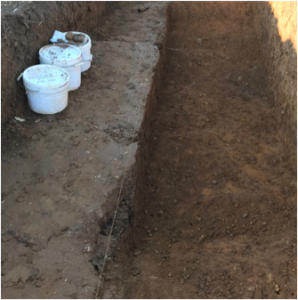
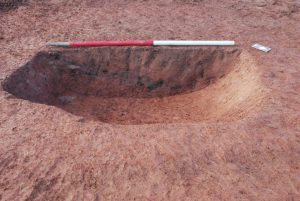
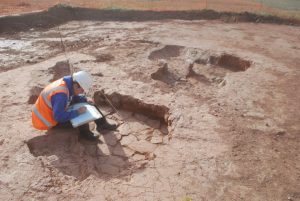
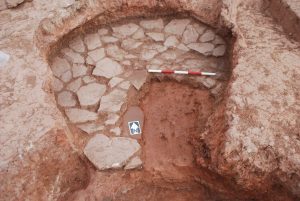
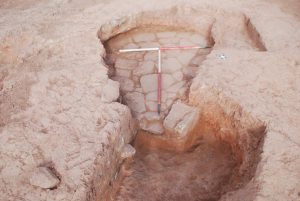
Post a Comment